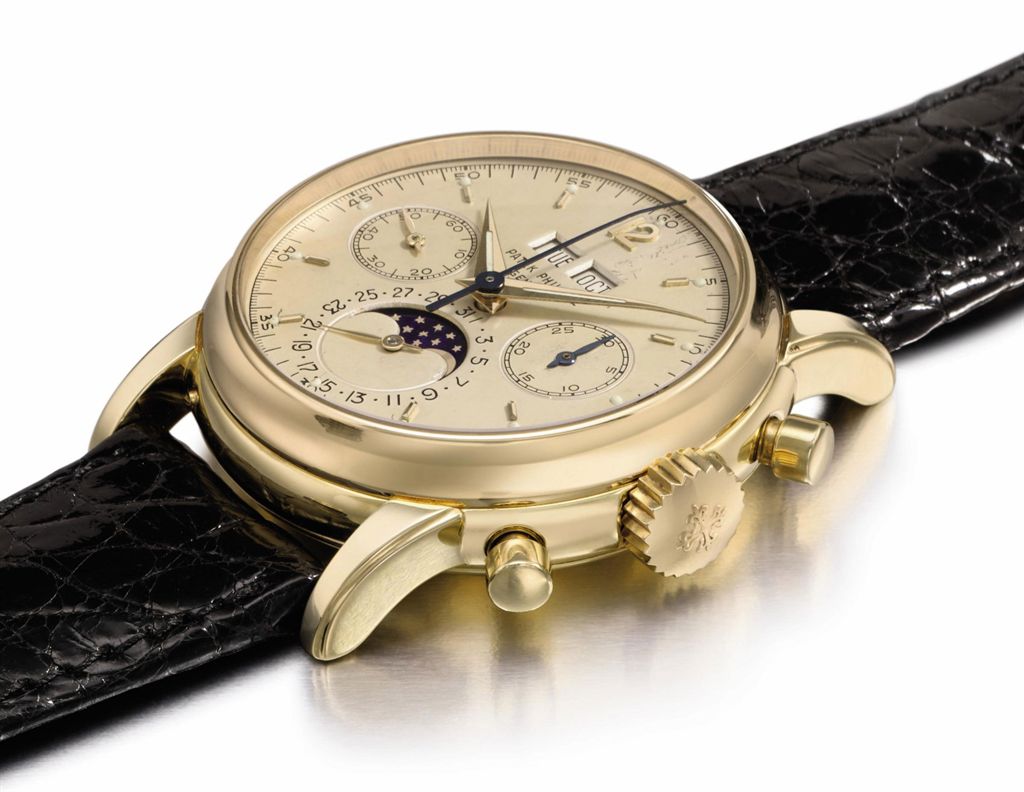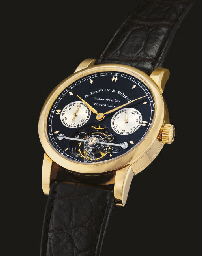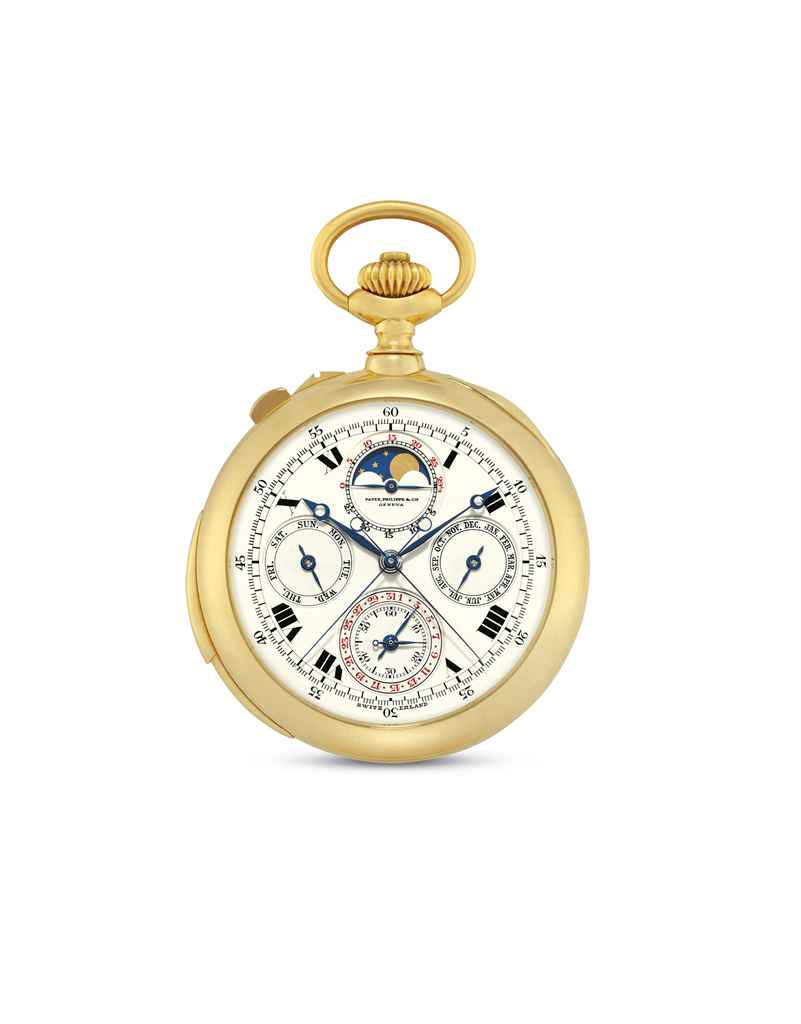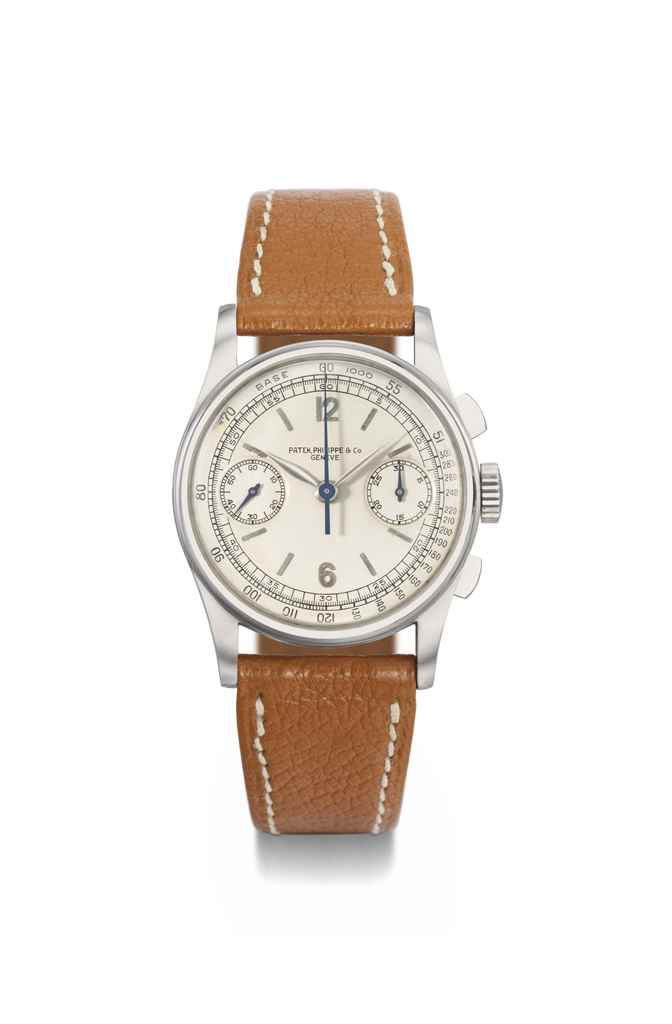A fine and rare German Renaissance gilt metal circular horizontal table clock with separate overhead alarm mechanism Hans Gotbub, Strasbourg, circa 1590 The circular gilt brass single fusee movement with four double-baluster turned pillars pinned through the backplate, verge escapement regulated by un-sprung two-arm balance and pinned end cap for the mainspring barrel, the concentric ring engraved backplate stamped *HANS*, *GVOT*, *BVOB* over city stamp for Strasbourg (arranged as a shield surmounted by five stars) and applied with fine symmetrical scroll pierced and engraved balance cock with conforming large foot and decorative mainspring set-up ratchet, the upper surface now fitted with a later circular brass Roman numeral dial with symmetrical foliate scroll engraved centre, cruciform half hour markers and single iron hand, the circumference of the case chased and engraved in relief with continuous scene of a rabbit hunt with two figures and four hounds pursuing a hare through an Arcadian landscape towards a net tied between two trees within cast moulded borders, the underside with ring turned blanking plate, on three later winged cherub feet, the top fitted with separate overhead alarm mechanism made with circular plates united by three rectangular section pillars enclosing a spring and contrate wheel driving the verge for the hammer, housed within a moulded shallow drum-shaped case surmounted by a bell with decorative top washer, the underside with hour hand mechanism release detent set between the three down curved supports engaging with the upper rim of the clock beneath, (restoration to the movement), diameter of clock 9.5cm (3.75ins); 15cm (6ins) high overall. Provenance: From the estate of an esteemed antiquarian horologist, acquired at Christie's, London, 5th July 2002 (lot 2). Literature: Maurice, Dr. Klaus Die deutsche Raderuhr, figure 509. A related hour-striking clock with automaton figure by 'Hans Gutbub' complete with a similar relief decorated frieze depicting a hunting scene and winged cherub mask feet is illustrated in Tait, Hugh Clocks and Watches, BRITISH MUSEUM 0n page 34 (figure 39). The general form and layout of the current lot has its roots in the earliest portable spring driven 'tambour' timepieces such as those made by Peter Henlein of Nuremburg (1485-1542). The fitment of the alarm mechanism as a separate assembly above the dial (so that it can activated by the hour hand) appears to be a system preferred by German makers for their alarm timepieces although early French examples of the Blois school also often used this system (see Cardinal, Catherine and Vingtain, Dominique TRESORS d'HORLOGERIE page 60 figure 54 for a similar example by Nicholas Plantart of Abbeville from the collection of Musee International d'horologerie at La Chaux-de-Fonds, Switzerland). Latterly, for hour-striking clocks, French makers tended to incorporate the bell within a pierced dome above the movement surmounted by the dial whilst German makers preferred to house it in the base. The change from iron to brass as the principal material employed in the construction of clock movements appeared to first occur in France, with movements dating as early as 1550 being entirely made of this material. In Germany makers seem to continue to use iron for wheelwork and movement frames (particularly for the larger clocks) for longer - up until the last quarter of the 16th century. Brass was then slowly introduced, firstly for spring barrel walls, fusee's and movement plates; with the wheelwork and movement frame posts completing the transition by around 1600. The reason why the French adopted brass earlier than German makers was probably simply due to the fact that it was more accessible to them - with the principal European foundries at this time being located mainly in the Burgundian territories of the Low Countries (particularly around Dinas in modern-day Belgium). Germany on the other hand were leaders in the production of high qual
A fine and rare German Renaissance gilt metal circular horizontal table clock with separate overhead alarm mechanism Hans Gotbub, Strasbourg, circa 1590 The circular gilt brass single fusee movement with four double-baluster turned pillars pinned through the backplate, verge escapement regulated by un-sprung two-arm balance and pinned end cap for the mainspring barrel, the concentric ring engraved backplate stamped *HANS*, *GVOT*, *BVOB* over city stamp for Strasbourg (arranged as a shield surmounted by five stars) and applied with fine symmetrical scroll pierced and engraved balance cock with conforming large foot and decorative mainspring set-up ratchet, the upper surface now fitted with a later circular brass Roman numeral dial with symmetrical foliate scroll engraved centre, cruciform half hour markers and single iron hand, the circumference of the case chased and engraved in relief with continuous scene of a rabbit hunt with two figures and four hounds pursuing a hare through an Arcadian landscape towards a net tied between two trees within cast moulded borders, the underside with ring turned blanking plate, on three later winged cherub feet, the top fitted with separate overhead alarm mechanism made with circular plates united by three rectangular section pillars enclosing a spring and contrate wheel driving the verge for the hammer, housed within a moulded shallow drum-shaped case surmounted by a bell with decorative top washer, the underside with hour hand mechanism release detent set between the three down curved supports engaging with the upper rim of the clock beneath, (restoration to the movement), diameter of clock 9.5cm (3.75ins); 15cm (6ins) high overall. Provenance: From the estate of an esteemed antiquarian horologist, acquired at Christie's, London, 5th July 2002 (lot 2). Literature: Maurice, Dr. Klaus Die deutsche Raderuhr, figure 509. A related hour-striking clock with automaton figure by 'Hans Gutbub' complete with a similar relief decorated frieze depicting a hunting scene and winged cherub mask feet is illustrated in Tait, Hugh Clocks and Watches, BRITISH MUSEUM 0n page 34 (figure 39). The general form and layout of the current lot has its roots in the earliest portable spring driven 'tambour' timepieces such as those made by Peter Henlein of Nuremburg (1485-1542). The fitment of the alarm mechanism as a separate assembly above the dial (so that it can activated by the hour hand) appears to be a system preferred by German makers for their alarm timepieces although early French examples of the Blois school also often used this system (see Cardinal, Catherine and Vingtain, Dominique TRESORS d'HORLOGERIE page 60 figure 54 for a similar example by Nicholas Plantart of Abbeville from the collection of Musee International d'horologerie at La Chaux-de-Fonds, Switzerland). Latterly, for hour-striking clocks, French makers tended to incorporate the bell within a pierced dome above the movement surmounted by the dial whilst German makers preferred to house it in the base. The change from iron to brass as the principal material employed in the construction of clock movements appeared to first occur in France, with movements dating as early as 1550 being entirely made of this material. In Germany makers seem to continue to use iron for wheelwork and movement frames (particularly for the larger clocks) for longer - up until the last quarter of the 16th century. Brass was then slowly introduced, firstly for spring barrel walls, fusee's and movement plates; with the wheelwork and movement frame posts completing the transition by around 1600. The reason why the French adopted brass earlier than German makers was probably simply due to the fact that it was more accessible to them - with the principal European foundries at this time being located mainly in the Burgundian territories of the Low Countries (particularly around Dinas in modern-day Belgium). Germany on the other hand were leaders in the production of high qual















Testen Sie LotSearch und seine Premium-Features 7 Tage - ohne Kosten!
Lassen Sie sich automatisch über neue Objekte in kommenden Auktionen benachrichtigen.
Suchauftrag anlegen